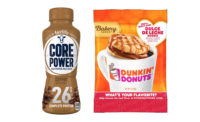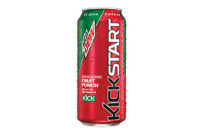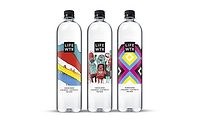![]()
ACNielsen’s Hale says c-store retailers should focus on prepared meals and fast foods as staples for future growth. “This is a channel that could use help in making their stores more female friendly and maybe think about taking some business away from Starbucks,” he says.
GLOBAL RETAIL TRENDS
Top retailers by fiscal year sales (in billions)
| Retailer | Sales | Retailer | $Sales |
| Wal-Mart | $244 | Safeway | $32.4 |
| Carrefour | $72.0 | JCPenney | $32.3 |
| Ahold | $59.3 (2001) | Intermarche | $31.5* |
| Home Depot | $58.2 | Kmart | $30.7 |
| Metro | $54.0 | Walgreens | $29.7 |
| Kroger | $51.8 | Edeke | $29 |
| Target | $43.9 | Auchan | $28.8 |
| Sears | $41.3 | Tenglemann | $28.2 |
| Tesco | $39.5 | Lowes | $26.4 |
| Costco | $39.4 | J. Sainsbury | $25.9* |
| Albertsons | $35.6 | CVS | $24.1 |
| Rewe | $35.2 | Ito Yokado | $23.3 |
| Aldi | $33.7 | ||
*Estimates
Source: ACNielsen Consumer Insight Report Fall 2003
obesity well-being trends. The growing product list associated with these healthier lifestyle choices isn’t just limited to the obvious bread, cookies and candy; rather they are impacting the entire food and beverage category spectrum.
| Online shopping gains momentum |
| A recent Internet study conducted by the
University of California-Los Angeles revealed that 61 percent of Americans
consider the Internet to be an “extremely” or “very”
important information source in their daily lives. According to ACNielsen’s
Consumer Insight report, the World Wide Web is expected to
grow by 30 percent between 2001 and 2005, compared to television consumption
which should increase only 2 percent.
America’s desire for the type of immediate information
that only the Web can provide is a fact that’s not lost on corporate
America. A growing number of companies are striving to create a stronger
Web connection with consumers and this phenomenon is translating into
increased retail sales and stauncher brand loyalty. In fact, eight of
the top 15 most impressionable consumer product goods companies advertising
online are beverage industry pillars such as PepsiCo, South African Breweries,
Brown-Forman, Anheuser-Busch, Nestle USA, Procter & Gamble, Unilever
and Sara Lee.
“Internet sales were very strong this past holiday
season, giving time-starved consumers convenient shopping from their personal
computers,” observes ACNielsen’s Todd Hale.
He cites Harris Teeter as an example.
|



